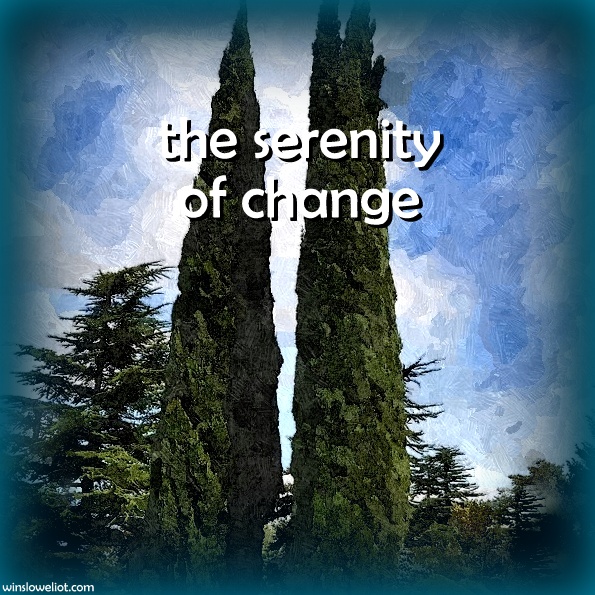
Stillness 10-5: Cypress trees, native to the fertile crescent of ancient Mesopotamia, can grow over to over 100 feet tall, and can live for hundreds, even thousands, of years. In ancient Persian culture, the cypress tree symbolized goodness, heroes, honor, immortality, eternity, and freedom. Planted at gravesides, and pointing to the heavens, it was a tree of passage and evolution. It symbolized transition and initiation. In ancient Greece, it symbolized a time of mourning, adorning statues of Hades, and used in cleansing the air during and after cremation. In Ancient Greek mythology, the cypress tree, or Cupressus, is named after Cyparissus, a young boy beloved by Apollo, whose best friend is a beloved pet stag. When Cyparissus accidently kills his stag while hunting, his grief turns him into a cypress tree so that he can mourn forever for his friend. The story describes the initiation of a boy becoming a man.
In our daily life, cypress reminds us of our own wheel of life that is a constant cycle of attachment, change, letting go, and then opening to new possibility. By releasing our story about ourselves, our relentless concepts of who and why we exist, we open ourselves to the limitless potential of who we can become.
I like to think of cypress trees as standing like sentinels over my heart, their deep blue-green holding me like no other color can. Witnessing sadness, adventure, and joy, they serenely enable us to feel all of life deep within ourselves. Rumi writes in his poem called “What Was Said to the Rose”:
What was said to the rose that made it open
was said to me here in my chest.
What was told to the cypress that made it strong
and straight, what was whispered to the jasmine
so it is what it is…
Feel your fragrant cypress tree standing strong and straight inside you, whispering to you of courage, change, and the deep blue-green abiding love inside your chest.
